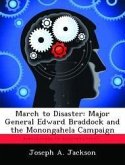The Goliad Campaign of 1836 is regarded as an obscure debacle in the annals of the Texas War for Independence, especially when compared to the famous and romanticized Battle of the Alamo. Goliad, arguably, had greater strategic importance, was better fortified, and was far more defensible than the Alamo; yet the leaders of both campaigns are regarded as complete opposites. The likes of Travis, Bowie, and Crockett are enshrined as heroic icons to most Americans, while Colonel James Walker Fannin Jr., Commanding Officer of Goliad, left an infamous legacy of recklessness, and indecisiveness, and is still considered largely responsible for the worst massacre in Texas history. During the Goliad Campaign of 1836, Fannin made several fatal decisions, which ultimately led to the slaughter of 342 soldiers. This research provides a contextual account of the Goliad Campaign of 1836, chronicles Colonel Fannin's background, describes force composition and leadership, and finally examines how modern Army leadership doctrine may have been applied during the campaign and how it could have influenced Fannin's decision-making process.








